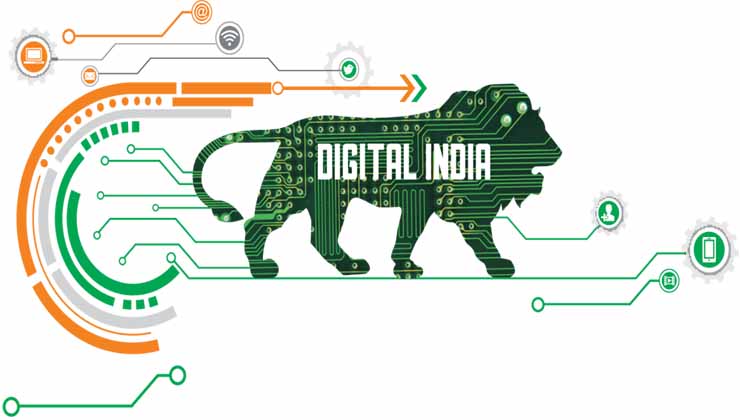 The Digital India initiative envisions digitization of the country, to deliver citizen services electronically and improves the way citizens and authorities transact with each other. However, for that to happen effectively and in a timely manner, having ubiquitous connectivity is an absolute imperative. The good news is that the government also realizes this need as reflected through the Prime Minister�s statement that broadband highways are equally important as national highways.
The Digital India initiative envisions digitization of the country, to deliver citizen services electronically and improves the way citizens and authorities transact with each other. However, for that to happen effectively and in a timely manner, having ubiquitous connectivity is an absolute imperative. The good news is that the government also realizes this need as reflected through the Prime Minister�s statement that broadband highways are equally important as national highways.
While connectivity is one criterion, enabling and providing technologies to facilitate delivery of citizen services to the end consumer forms the other. Technology trends such as the Internet of Everything and mobility can take these new initiatives to a previously uncovered section of society.
The government has set targets and deadlines for itself to achieve some of these goals, for example-broadband connectivity to cover all 250,000 gram panchayats by December 2016 and universal access to mobile connectivity for 40,000 villages by 2018. While not impossible, it would be extremely difficult for the government to achieve this on its own due to multiple factors including financial viability and technical know-how. This is where the role of private players and the concept of public private partnerships will come into play.
The “PPP” way
Before moving into specifics about what private players bring to the table, it is important to understand the business dynamics and opportunity. According to industry projections, India will have 526 million Internet users and over 1.5 billion connected devices by 2018. While this will certainly help the government realize the Digital India vision, it also translates into a huge opportunity for private players to collaborate with the government to roll out technology-based solutions.
Private players, for example Cisco, can bring in next generation technologies and expertise leveraging their experience of implementing these solutions around the world. Project management and best practices, along with domain knowledge and financing options in certain cases, are the other capabilities private players bring to the table.
Over the years, governments have realized the value public-private-partnerships (PPPs) bring. Proof of that are the 46 infrastructure development projects in 33 cities across the country with a combined outlay of INR 25,902.84 crore.
One among this is the Delhi-Mumbai Industrial Corridor project. One of the world�s largest infrastructure projects, it is spread over 1,480 km, and aims to create a new transportation and urbanization corridor between the country�s political and business capitals. The corridor will have smart cities and industrial towns with an embedded ICT master plan that will enable the provision of citizen services.
According to Gartner, the government IT spends in India will clock $7.2 billion in 2015, out of which a large chunk will be for the Digital India programme, another area where the PPP model could play a crucial role. The private sector could help the government setup the robust technology infrastructure required to support the roll out of the various Digital India initiatives and at the same time improve the internal functioning which, in a geographically diverse country like ours can be quite challenging.
While the PPP model is the ideal solution, the path to making it work is not without obstacles and roadblocks.
Factors such as technical feasibility, lack of physical infrastructure and standardization combined with archaic laws and policies need to be addressed on priority. The central as well as state governments have realized this and have made a spate of announcements that aim to improve the functioning of PPP projects.
An example of this is the recent amendment the ministry of finance has made to enhance the financial support for projects in the infrastructure sector under the Viability Gap Funding Scheme.
Another example is the Smart Cities Mission for 100 smart cities and the Atal Mission for Rejuvenation and Urban Transformation for 500 cities approved by the cabinet recently. With a combined outlay of nearly R1 lakh crore, these two schemes are poised to transform the country in a big way over the next five years. While further details are awaited about the role of the private sector in these initiatives, there is little doubt about their participation and the critical role they would play in teaming with central and state governments, as well as local authorities. Definitely these two programmes have the potential to become a model for showcasing the efficacy of PPP, particularly in emerging economies.
Clearly we are at an inflection point, and the Digital India opportunity can help us leapfrog into the 21st century in terms of business and technology. One factor that will determine the success of this initiative will be private participation. Going by the intent and initial signs that have been demonstrated, that is not far from realization.






